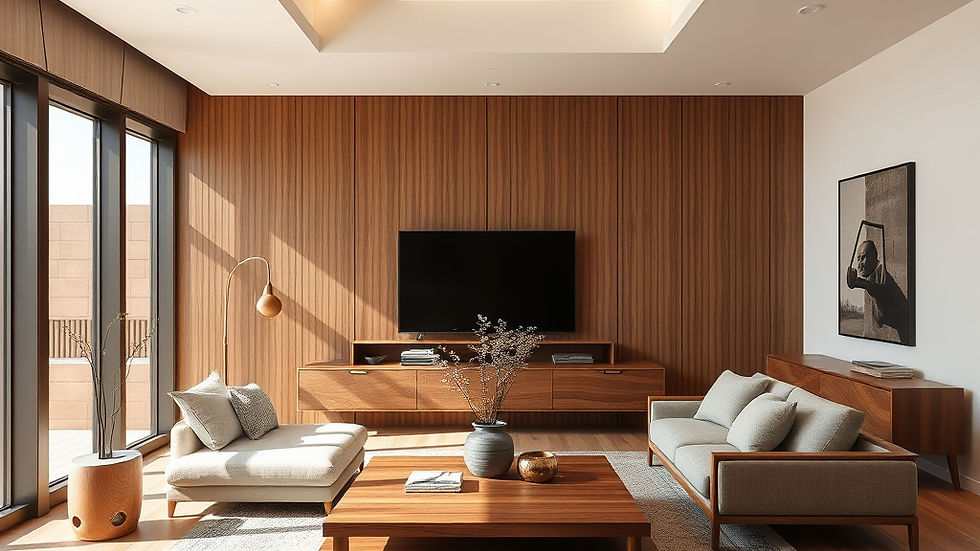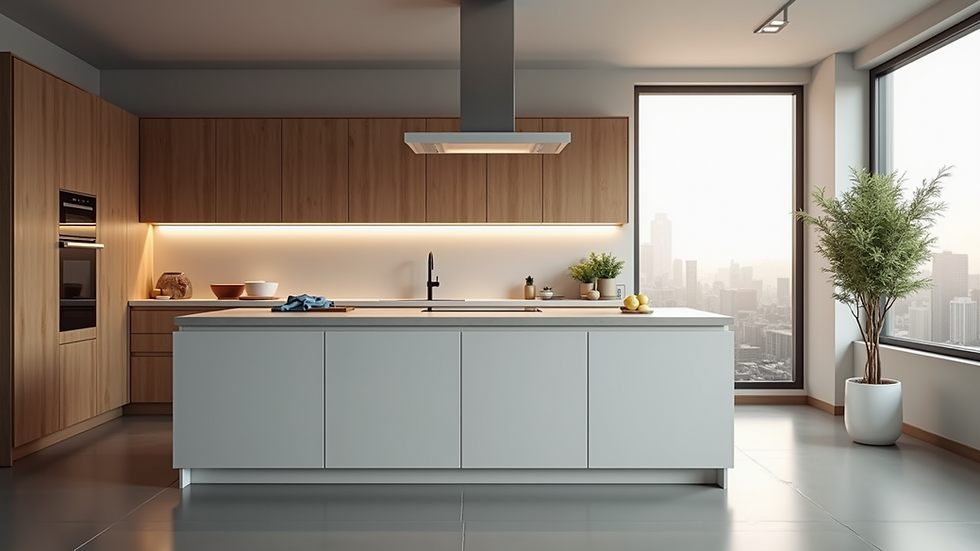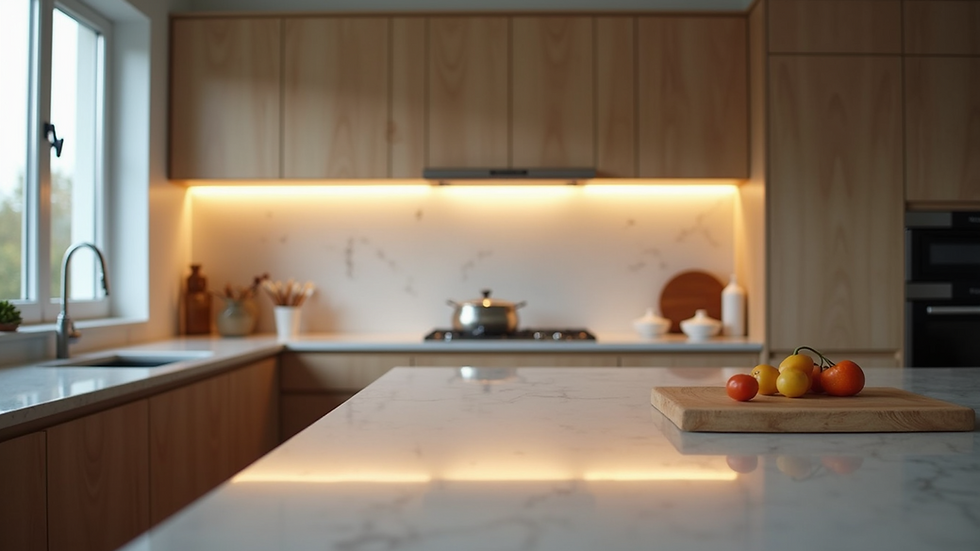Affordable Tips for Transforming Your Home
- Amit Anand
- Aug 28
- 4 min read
Transforming your home can be a daunting task, especially when you're working with a tight budget. However, with some creativity and planning, you can achieve impressive results without breaking the bank. Let’s dive into some affordable tips to revamp your living space.
Budget-Friendly Renovations
Before you start tearing down walls or splurging on new furniture, it's essential to identify the areas in your home that need the most attention. Prioritizing projects ensures that your renovation efforts yield the best results for your investment. Here are a few tips to get you started:
Paint: One of the easiest and most affordable ways to transform a room is with a fresh coat of paint. Choose light, neutral colors to create a sense of space and relaxation. Not only does painting walls enhance their appearance, but it can also increase the value of your home.

A fresh and inviting living room with newly painted walls. DIY Decor: Instead of purchasing expensive artwork or wall decorations, consider creating your own. You can find tutorials online for creating wall art using materials you already have at home. This not only saves money but also adds a personal touch to your decor.
Furniture Rearrangement: Sometimes, all it takes to breathe new life into a room is rearranging the furniture. Experiment with different layouts until you find one that maximizes space and flow. You might be amazed at how fresh and inviting a room can feel with just a little adjustment.
What is a Realistic Budget for Home Renovation?
Creating a realistic budget for renovation is essential for keeping your project on track. On average, homeowners spend about 10-15% of a home’s value on renovations. However, this can vary based on the scope of the project. Here are a few guiding points to help you set your budget:
Research Costs: Investigate how much various renovation projects typically cost in your area. This can include materials, labor, and any permits you may need.
Plan for the Unexpected: Leave a buffer in your budget, usually about 10-20%, to cover unexpected expenses, such as repairs or changes in materials. This way, you won't be caught off guard financially.
Focus on High-Impact Areas: If your budget is tight, prioritize renovations that can offer the best return on investment. These may include kitchen upgrades, bathroom renovations, or even landscaping improvements.
Upcycling Furniture: Instead of buying new furniture, consider upcycling old pieces. A coat of paint or new hardware can turn a dated piece into a stunning focal point. Look for resources on how to refresh your old furniture beautifully.

A beautifully upcycled vintage chair with a fresh coat of paint. Lighting Upgrades: Lighting can drastically change the mood of any space. Swap out outdated fixtures for more modern styles, or simply replace bulbs with LED options for better energy efficiency and a brighter ambiance. Dimmers are also a budget-friendly option to control the intensity of light.
Simple Updates That Make a Big Difference
Sometimes, small changes can create a significant impact. Here are some quick and inexpensive updates that can enhance your home’s appeal:
New Hardware: Updating knobs and pulls on cabinets can give your kitchen or bathroom a fresh look without spending a fortune. Choose modern styles that complement your overall design.
Accessorize Wisely: Use accessories like throw pillows, blankets, and rugs to add color and texture. These items can easily be swapped out seasonally, allowing for a simple update without major expense.
Natural Elements: Bring the outside in by using plants as decor. Not only do they improve air quality, but they also add life to your space. Choose low-maintenance options like succulents or snake plants if you are concerned about upkeep.

A cozy room adorned with decorative plants that bring the space to life.
Financing Your Renovation
Understanding how to finance your renovation is just as important as the actual renovation plan. Here are a few options:
Savings: The best way to avoid debt is by saving up for your project. Set aside a specific amount each month until you have enough to fund your renovations.
Home Improvement Loans: If savings aren’t an option, consider taking out a home improvement loan. Just be sure to understand the interest rates and terms before signing on for a loan.
DIY When Possible: Many projects can be tackled by homeowners with some patience and research. Taking a DIY approach not only saves money but can also be a rewarding experience.
By focusing on affordable home renovation techniques, you can creatively enhance your home without the stress of overspending.
Final Touches for Your Renovation Project
Once you’ve completed the major renovations, adding finishing touches can bring the space together. Here are some ideas:
Personal Touches: Display family photos or personal artwork to make the space uniquely yours. Personal items can make your home feel inviting and warm.
Seasonal Decor: Change decorations seasonally to keep your home looking fresh. Whether it’s autumn leaves or spring flowers, a quick seasonal refresh can keep your home feeling vibrant and welcoming.
Regular Maintenance: Finally, don’t forget about maintenance! Regular upkeep can extend the life and appearance of your renovations. Schedule regular check-ups for plumbing and electrical systems to prevent costly repairs down the line.
Transforming your home doesn’t need to cost a fortune. By following these tips and being strategic with your planning and budgeting, you can create a space that you love, without straining your finances. Take your time, do your research, and enjoy the process of making your home a reflection of you and your family!



Comments